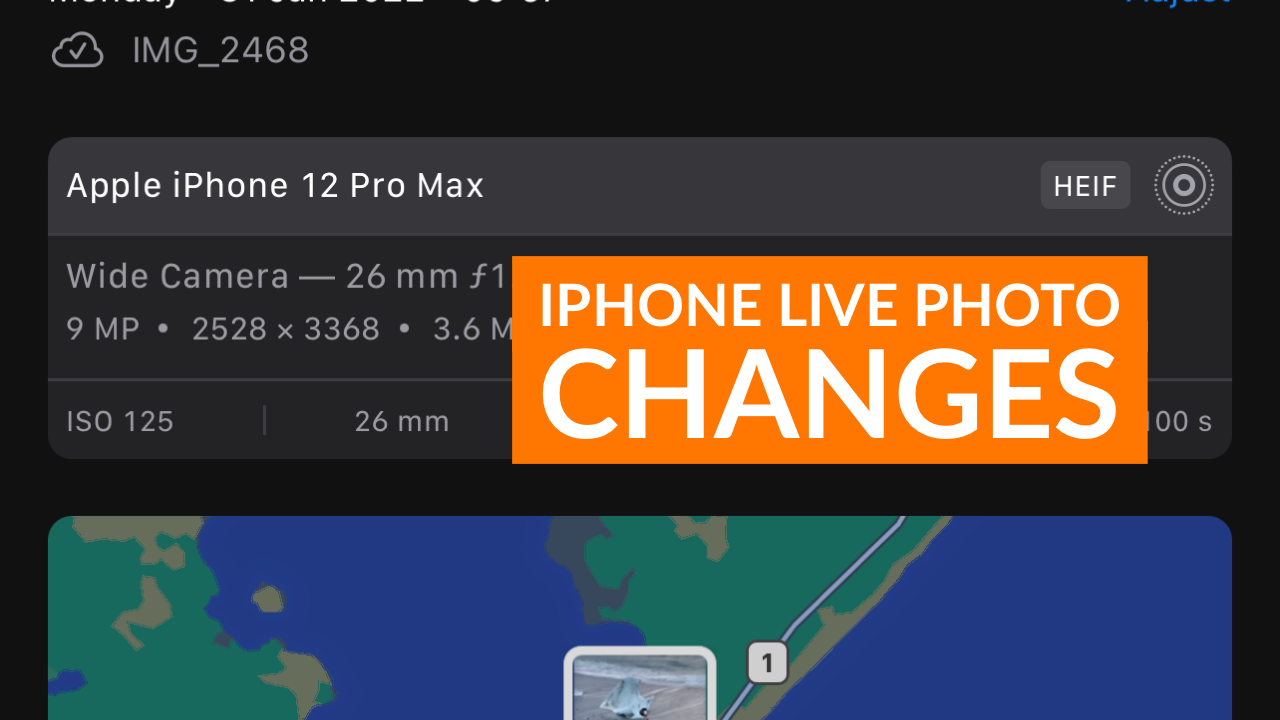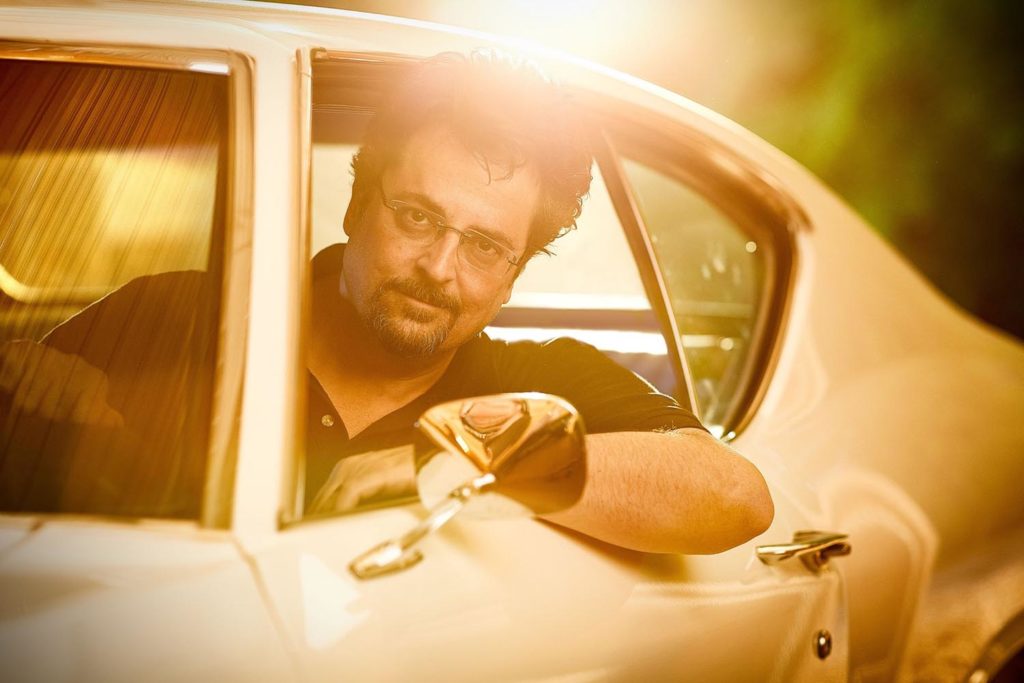
Photographing Concerts with Difficult Lighting
As a professional tour photographer, I’m fortunate that I get to cover shows that have amazing lighting. These tours hire talented lighting designers who put together a beautiful looking show that can wow the fans in packed arenas and stadiums.
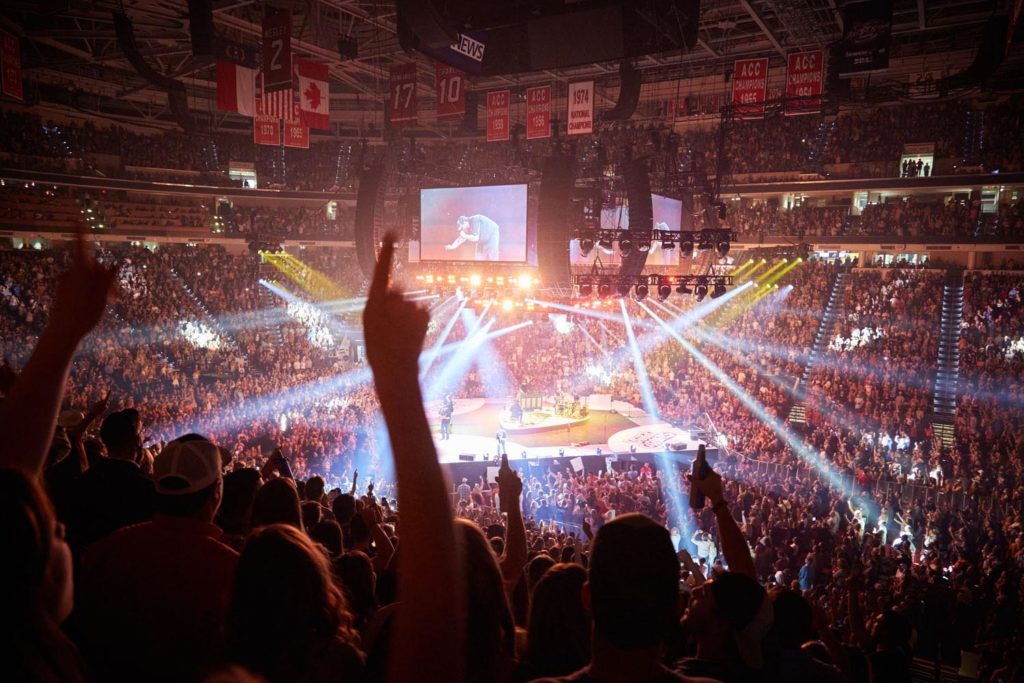
I’m still occasionally hired to work with artists that play smaller venues. In addition, most of us have friends in bands that perform at the local bar in town. It’s safe to say that the lighting at a local club is usually not very good. If there’s even a raised stage, it’s not uncommon to see one red light in the middle and that’s it. Depending on the band, sometimes the lighting is just solid red even at an arena show.
So how do you make great pictures in an environment like that? I’ve found two ways to make it work.
Option 1: Fast lenses and post-processing
This is the most obvious solution. By using lenses with very wide maximum apertures, you should still be able to get a decent shutter speed. Zoom lenses with f/2.8 apertures should work, while primes like a 50mm f/1.8 (the “nifty fifty”) give you a fighting chance without breaking the bank. Crank your ISO up as high as you’re comfortable and open your aperture all the way. That will hopefully get you a shutter speed of at least 1/125 and maybe faster.
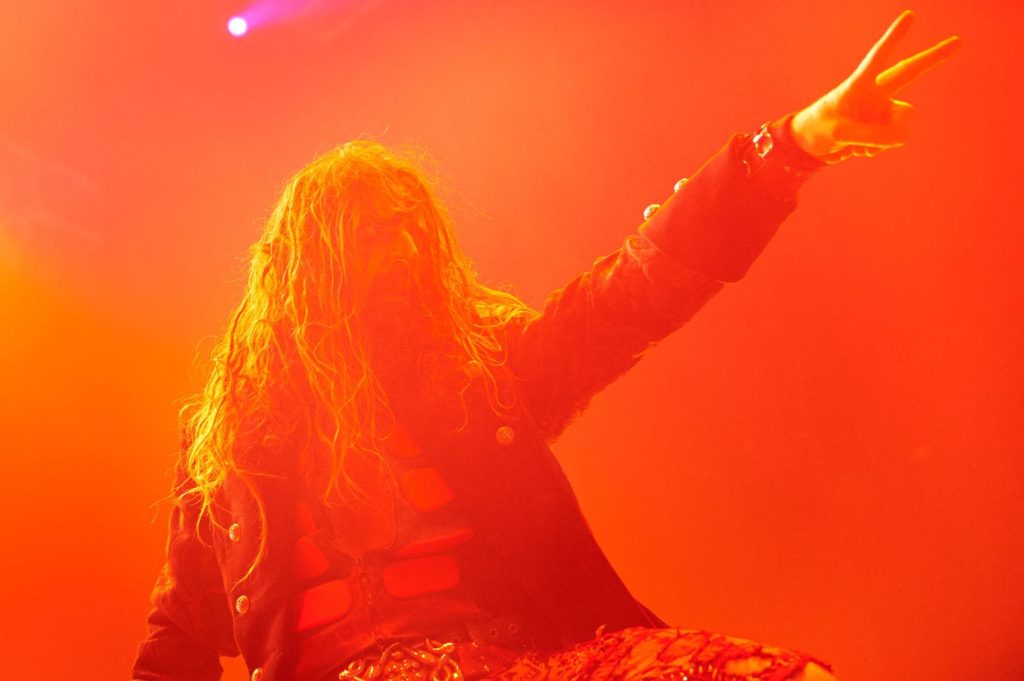
Sidenote: Don’t be afraid to use very high ISOs. If you make a great image, no one will notice or complain about ISO noise in the shadows. Five years ago, I was shooting at 6400 ISO on my Canon 1DX Mark II bodies. Today, using the Canon R3, I can easily get away with 12,800 ISO or higher if I need it.
You may find that the light is inconsistent and much brighter in one spot than the others. I prefer to shoot manually and just change my shutter speed as needed, but you could probably make a case for using aperture priority in this situation — especially if your subject is moving in and out of the light very quickly.
Even with a proper exposure, if the quality of the light is horrible, then you can always do something helpful in post-processing: convert to black and white. When the color is distracting (like the red light!), or if it just doesn’t add anything to the image at all, I’ll strip it away. I use Silver Efex Pro from DXO’s Nik Collection. The program incorporates actual film stocks and is the best plug-in for black and white that I’ve ever used.
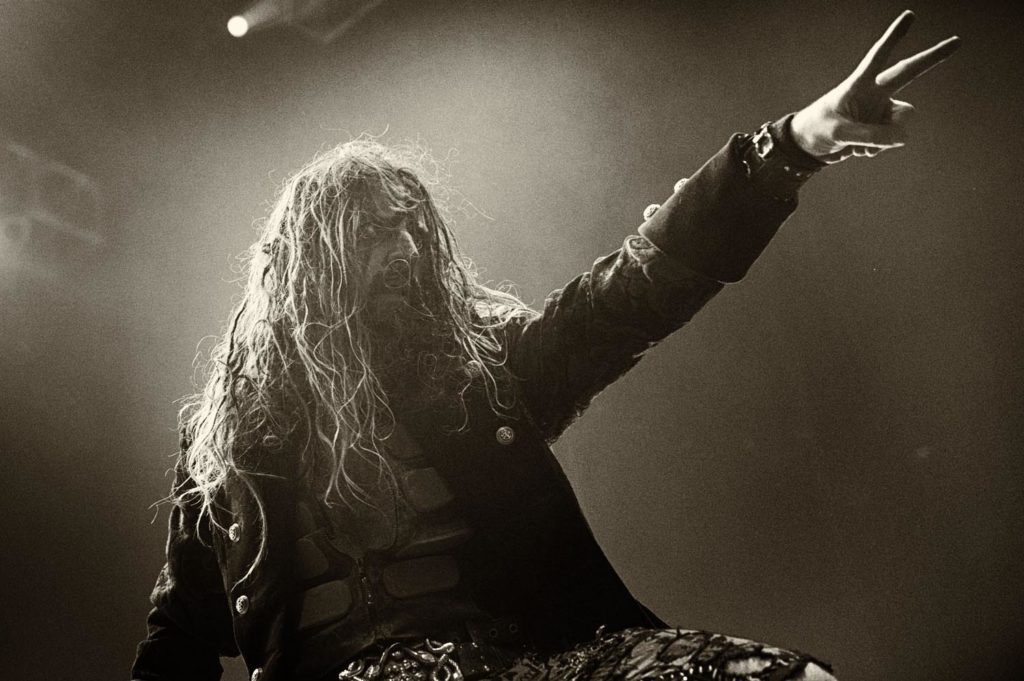
Shooting with fast lenses and converting to black and white is one way to deal with less-than-ideal lighting. However, I believe I have a better solution. It takes more work and time to pull this off, but it’s absolutely worth the effort.
Option 2: Use Flash
I know that photographers are often told that flash is not allowed at a concert. If you call the club and ask if you can photograph the show using flash, they’ll say, “no.” However, I’m not talking about putting a flash on your camera and blasting away. With some effort, you can do something a bit more creative.
Thanks to modern technology, we now have the ability to put small Speedlites in unique places and trigger them wirelessly. Canon’s RT system (for “radio transmission”) is a reliable way to control and fire flashes within a large radius. You can either use one of your flashes to trigger all the others, or you can get a device like the Canon ST-E3-RT that’s simply a wireless flash controller without its own flash.
If it’s your friend’s band and they’ve asked you to take some pictures, tell them you’d like to go early when they’re setting up for their set. Then, casually ask if you can put one or two of your little flash units on the stage. Maybe even behind the band on top of their amplifiers. Of course, make sure they are not in anyone’s way, but it’s likely that they won’t even notice them there.
You can also add gels to change the color of that bright white light that normally emits from the flashes. Red and blue are fun colors to play around with. I prefer to set everything on manual — both the flash output and the camera exposure. Use the time before the show to get all your settings dialed in and make sure the flashes look how you want.
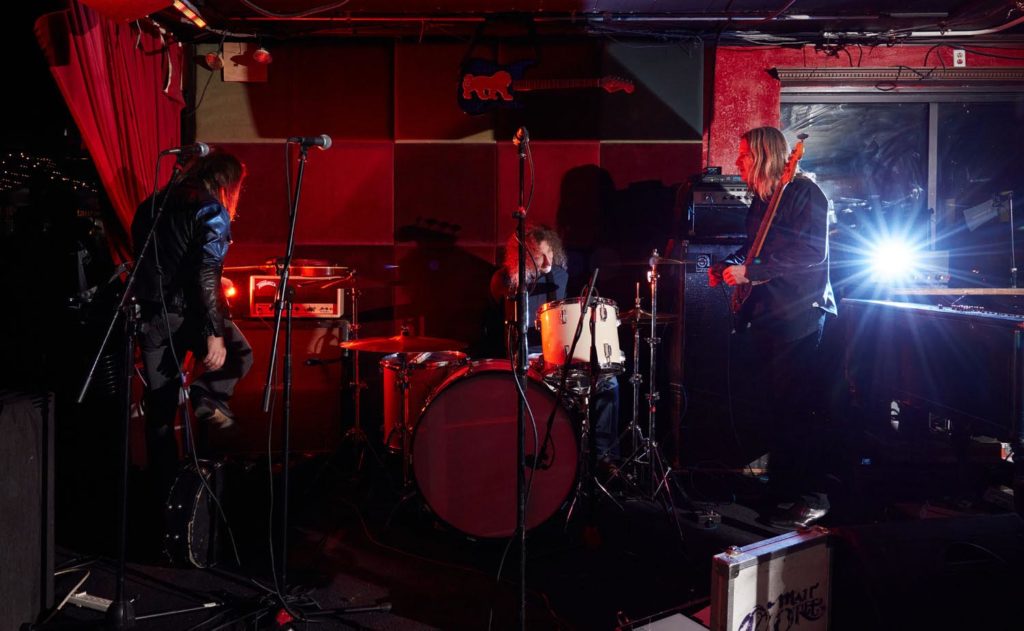
You will also need some light from the front. I like to put one with a slight warming gel off center in the corner to give my images some depth and prevent it from blasting directly into the musician’s eyes. You can put that flash on a light stand in the back of the club (as long as it’s not a hazard for the crowd!), or you can use something a bit more inconspicuous like the Manfrotto super clamp and magic arm to attach it to a railing or something near the ceiling.
I’ll take a shot of my hand so I can gauge the exposure and see how all of my lights are mixing together.
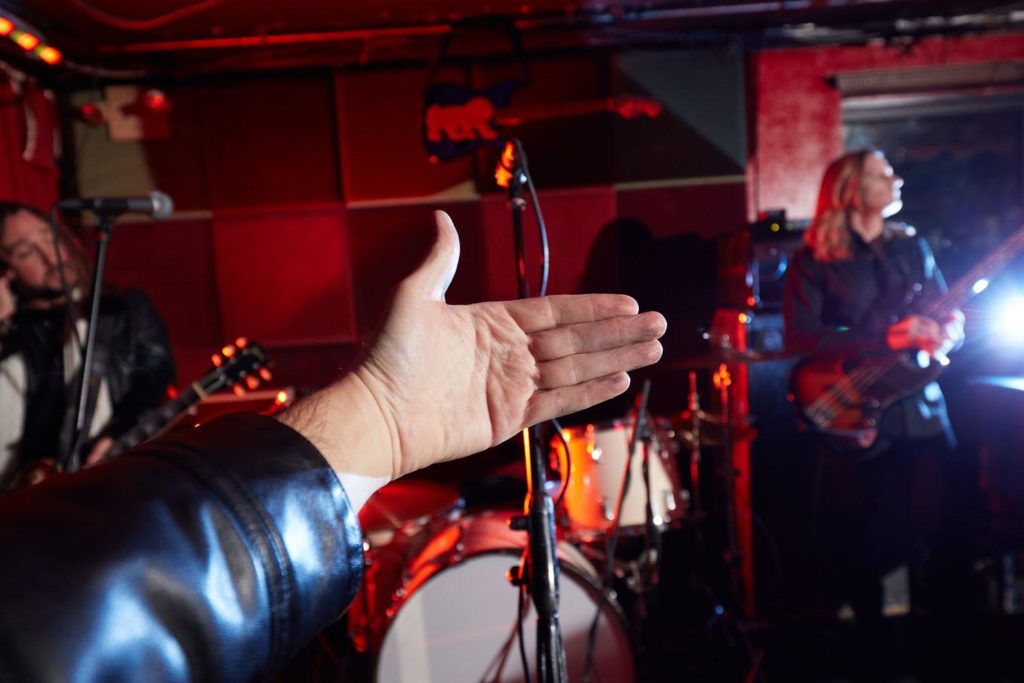
The net result is that you have taken a bad lighting situation and basically created your own light show that can only be seen by your camera when you take a picture.
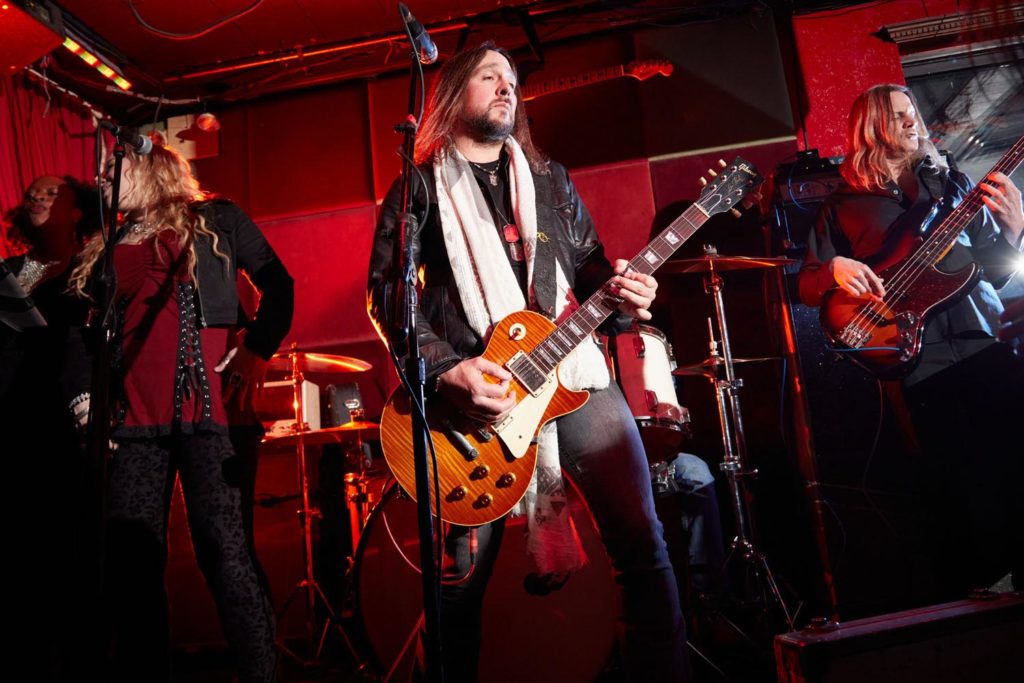
The fast flash duration will freeze action, and you can lower your ISO and use different lenses that have a smaller maximum aperture.
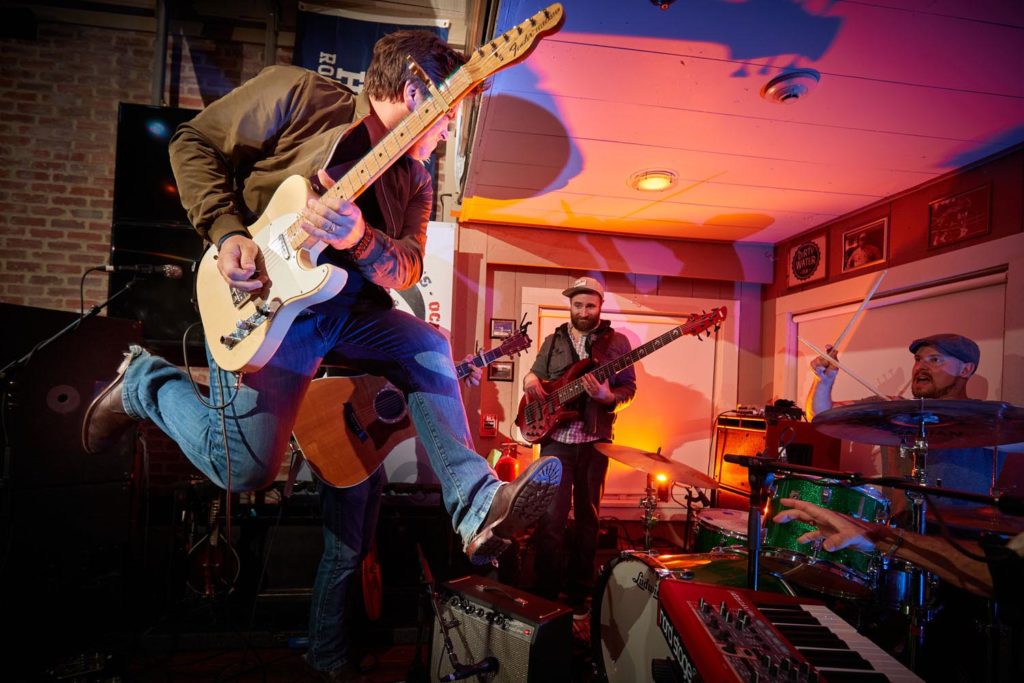
VERY IMPORTANT: You need to read the room. You will be using flash and it can be annoying or distracting to the fans and the band if you overdo it. If a fan or the venue staff complains, don’t argue. The show is happening for the fans, not for you. You have to know when to push it and when to back off. If it’s a quiet, singer-songwriter open mic night, I would leave the Speedlites at home and make it work with the available light (and a mirrorless camera on electronic shutter / silent mode!). But a loud, heavy metal band with fans going nuts in a mosh pit? Blast away!
Conclusion
Whether you use fast lenses and convert to black and white, or if you decide to go all out with multiple flashes to create your own light show, you are limited only by your imagination. The flash placement I describe above is just a suggestion. Get creative and use as many flashes, angles, and colors as you want to create unique, powerful, high quality images that your clients – and your friends – will love.
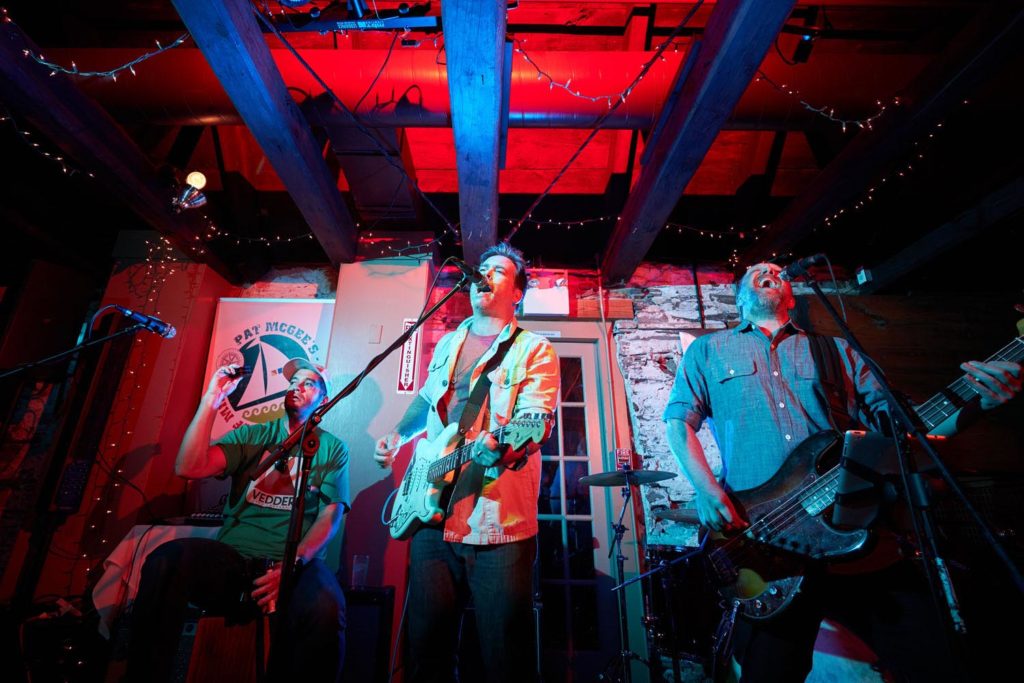
Shoot From The Pit Workshop
You can join me at a real show (with great lighting!) and I’ll teach you everything I know about shooting concerts. Get more info about my “Shoot From the Pit” live concert photography workshops at ShootFromThePit.com!
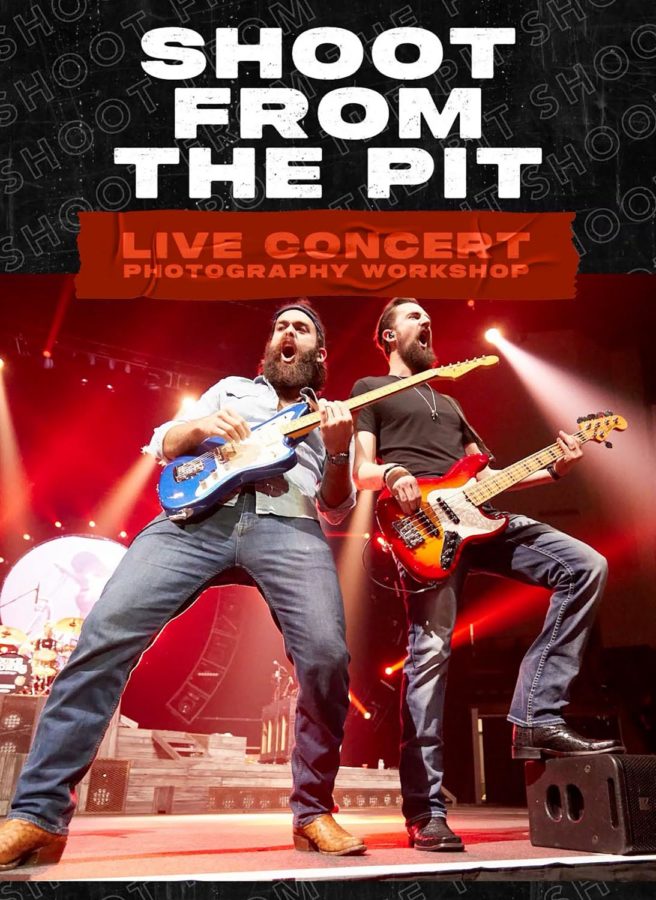
Canon Explorer of Light David Bergman is a New York based commercial photographer and photo educator who specializes in portraiture, music, and action. As the official tour photographer for Bon Jovi and Luke Combs, he has documented bands on stage and on the road in more than 30 countries, and shares his experience with photographers of all skill levels at his “Shoot From The Pit” live concert photography workshops. In addition to his other celebrity clients, Bergman has 13 Sports Illustrated covers to his credit and has photographed numerous Olympics, World Series’, Super Bowls, NBA, and NCAA Championships. Noted as a pioneer with the GigaPan, his gigapixel-resolution image of President Obama’s first inaugural speech was viewed by over 30 million people. Bergman hosts educational web series’ including “Ask David Bergman” and “Two Minute Tips” for AdoramaTV. Before moving to New York City in 2001, Bergman was a photojournalist on staff at The Miami Herald where he covered news and sporting events around the world.
You can see more of his work at DavidBergman.net, check out his workshops at ShootFromThePit.com, and keep up with him on Instagram and Twitter.



